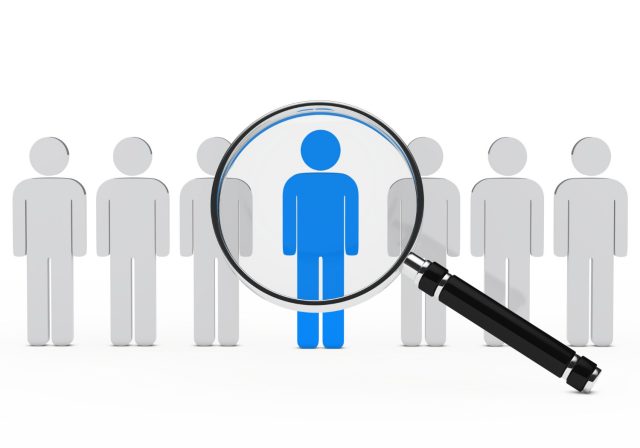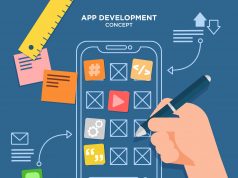In today’s rapidly evolving business landscape, where design and aesthetics play a pivotal role in capturing audience attention and fostering brand loyalty, finding the perfect design agency has never been more critical. Whether you’re a budding startup, a mid-sized business, or a well-established corporation, the quest for a design agency in the United States that aligns with your unique vision and can deliver exceptional creative solutions can be both exciting and daunting. This journey involves not only identifying top-notch design agencies but also understanding how to evaluate and collaborate with them effectively. So, join us as we embark on a journey to unravel the art of finding a stellar design agency in the US, ensuring your brand’s success through captivating design and innovation.
What to look for in a design agency
When searching for the ideal design agency in the United States, it’s crucial to understand what to look for to ensure a successful partnership. Here are key considerations:
Portfolio and Expertise:
Begin by examining the design agency’s portfolio. It should showcase a diverse range of projects and designs, ideally including work similar to your needs. Pay attention to the quality of their previous work and whether they have experience in your specific industry or type of design, be it web design, app development, branding, or other areas.Client Reviews and Testimonials:
Real-world feedback from past clients provides valuable insights into the agency’s working style, reliability, and project delivery. Look for testimonials or reviews on platforms like Google, Yelp, or Clutch. These reviews can give you an idea of client satisfaction and how well the agency meets deadlines and communication expectations.Expertise in UX/UI Design:
A great design agency should excel in both User Experience (UX) and User Interface (UI) design. This expertise is especially critical for web and app development, as it ensures not only aesthetic appeal but also user-friendliness and functionality.Creative Team:
Understand the agency’s creative team. Who are the designers, and what are their qualifications? Are they experienced in your industry or niche? Having a team with diverse skills and backgrounds can be a significant advantage, as it brings different perspectives to your project.Communication:
Effective communication is key in design collaborations. Assess the agency’s responsiveness, clarity in conveying ideas, and willingness to listen and understand your vision. Open and transparent communication fosters a smoother and more productive partnership.Scalability:
Consider whether the agency can scale its services according to your project’s needs. This is particularly important if your project evolves or expands over time. Ensuring the agency can accommodate these changes without compromising quality is crucial.
Selecting the right design agency in the US requires a thoughtful evaluation of their skills, experience, and compatibility with your project’s objectives. By considering these factors, you can make an informed decision that aligns with your creative goals and ensures a successful partnership.
How to evaluate design agencies

When embarking on the journey to find a suitable design agency in the USA, it’s essential to consider several key factors that can significantly impact the outcome of your creative projects. First and foremost, the agency’s portfolio should be your initial focal point. A design agency’s portfolio is like a visual resume, showcasing their past work, design style, and overall capabilities. Take the time to examine their portfolio in detail, paying attention to projects that resonate with your vision. A diverse and impressive portfolio can be indicative of an agency’s proficiency and creative range, giving you confidence in their ability to meet your project’s requirements.
While a portfolio provides a glimpse into an agency’s past work, reaching out to their previous clients can offer deeper insights. Don’t hesitate to ask the agency for references and connect with their former clients. This firsthand feedback can reveal critical information about the agency’s professionalism, communication, and reliability. It’s an opportunity to gauge whether the agency can deliver not only creatively but also in terms of meeting deadlines and maintaining a smooth client-agency relationship.
How to set a budget for design work
Setting a budget for design work is a crucial step in any creative project, ensuring that you can achieve your design goals without overspending. Here’s a guide on how to effectively establish a budget for design work in the context of the USA:
Define Your Project Scope:
Start by clearly defining the scope of your design project. What are your objectives, goals, and deliverables? The more specific and detailed your project scope is, the easier it becomes to estimate costs accurately. Consider factors like the number of design assets, the complexity of the work, and any additional services required.Research Industry Standards:
Research industry standards and average pricing for similar design projects in the USA. This can provide a benchmark for your budget. Keep in mind that design rates can vary significantly depending on the region, the level of expertise, and the type of project.Allocate a Contingency Fund:
Design projects can sometimes encounter unexpected challenges or revisions that may require additional resources. It’s a good practice to allocate a contingency fund within your budget to accommodate any unforeseen expenses without disrupting your project timeline.Consider Long-Term Value:
While it’s important to stay within your budget, also consider the long-term value of the design work. High-quality design can have a lasting impact on your brand and user experience. Investing in professional design services can often yield better results in terms of user engagement and conversions.Negotiate and Prioritize:
Don’t hesitate to negotiate with the design agency or freelancer to find a pricing structure that aligns with your budget. In some cases, you may need to prioritize certain design elements or phases to stay within budget while still achieving your project’s primary goals.Track Expenses:
Throughout the project, diligently track your design expenses. This helps you stay on top of your budget and make adjustments if necessary. Effective expense tracking ensures that you’re accountable for every dollar spent.
By following these steps, you can set a realistic and manageable budget for your design work in the USA, allowing you to move forward with your creative project confidently and efficiently.
Negotiating with design agencies
Negotiating with design agencies is a pivotal stage in the process of securing the services you need to bring your creative projects to life. Effective negotiation is a dynamic dance where both parties seek to achieve a balanced agreement that serves their interests. It commences with open and honest communication, with the client clearly articulating their project objectives, design preferences, and budget constraints. This transparent exchange lays the foundation for a productive negotiation.
Once the lines of communication are established, the negotiation process delves into the specifics. It involves defining the project scope and deliverables in meticulous detail, discussing pricing structures, and establishing payment terms. During this phase, flexibility is key – both the client and the design agency should be open to compromise and willing to explore alternative solutions that align with the project’s objectives and budget. Negotiation isn’t merely about reaching a financial agreement; it’s also an opportunity to build a collaborative partnership where both parties are motivated to achieve exceptional design outcomes. By maintaining professionalism, clear communication, and a solutions-oriented approach, negotiations with design agencies can lead to a win-win scenario where creative visions are brought to life effectively and efficiently.
Tips for working with a design agency
Collaborating with a design agency can be a rewarding experience when approached with clarity and professionalism. Here are some invaluable tips for making the most of your partnership:
Establish Clear Objectives and Expectations:
Effective collaboration with a design agency starts by setting clear objectives and expectations. Begin by creating a comprehensive project brief outlining your goals, target audience, and scope. Ensure both you and the agency share a common understanding of the project’s objectives. Defining measurable success metrics is crucial to gauge the project’s effectiveness and align efforts toward achieving your desired outcomes.Open and Constructive Communication:
Successful partnerships thrive on open and constructive communication. Schedule regular check-ins to discuss progress, address concerns, and provide feedback. Encourage a culture of constructive feedback to refine the agency’s work and enhance the project’s quality. Responsiveness is key; ensure you respond promptly to queries and requests to avoid potential bottlenecks and maintain project momentum.Trust the Expertise of the Design Agency:
Trust is at the core of any successful collaboration. Remember that you hired the agency for their expertise, so it’s essential to trust their creative skills and design knowledge. Leverage their experience by tapping into their insights and best practices. Foster a collaborative partnership by actively engaging in discussions and exploring ideas together, capitalizing on their experience to achieve the best results.
By following these tips, you can navigate your partnership with a design agency more effectively, resulting in successful projects and a positive working relationship.

Conclusion
In the dynamic world of design, finding the right agency in the USA can be a game-changer for your projects. Throughout this exploration, we’ve journeyed through the critical steps to uncover a design agency that aligns with your goals and vision. By understanding what to look for in an agency, recognizing the diverse types of agencies available, mastering the art of evaluation, and efficiently managing budgets and negotiations, you’re equipped with the knowledge to embark on a successful partnership. Moreover, as we’ve emphasized the importance of clear communication and fostering trust in your collaboration, you’re poised to harness the full potential of your chosen agency. In the ever-evolving landscape of design, this guide empowers you to make informed decisions that will elevate your creative endeavors and help you realize your design aspirations in the USA.
Read more:


















